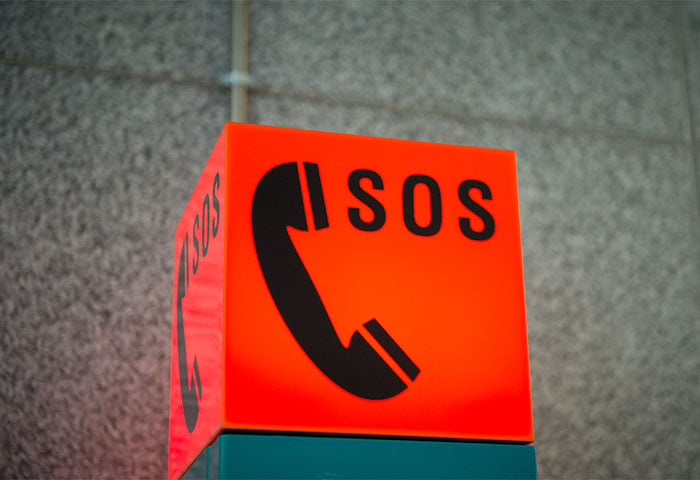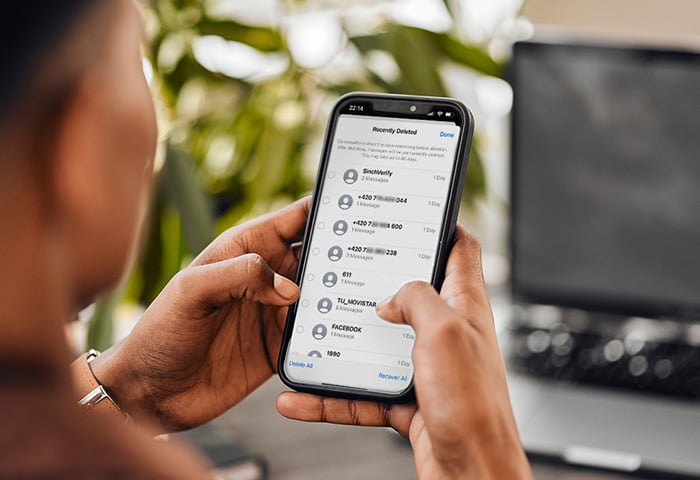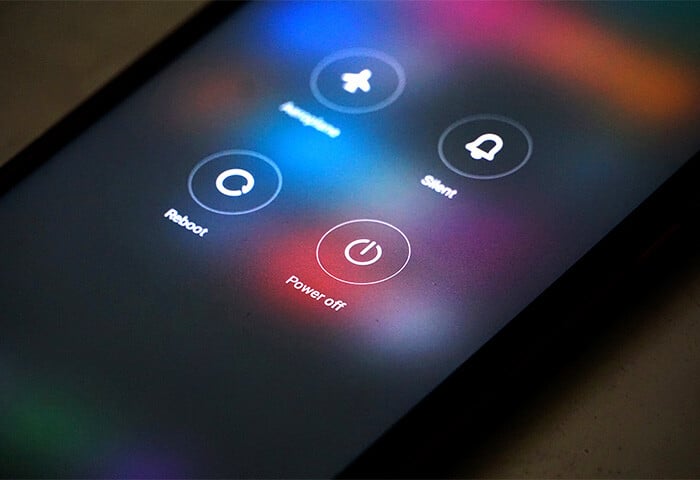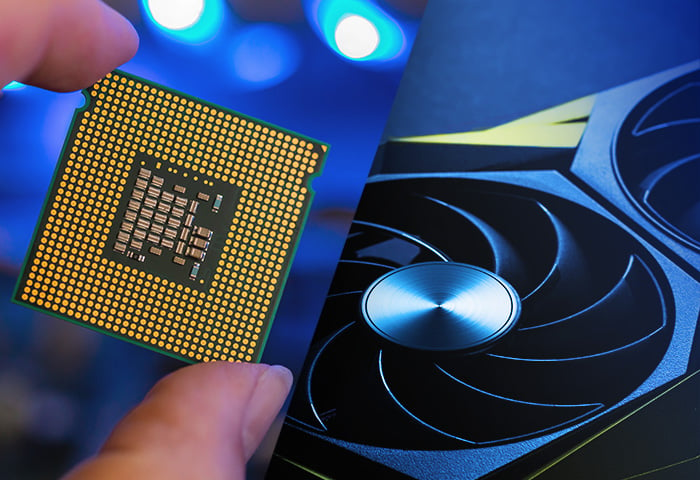Many apps refresh — update themselves with new information — when you’re not using them. This background app refresh can quickly eat through your data plan. When you hit your data cap, your provider will throttle, or restrict, your internet access.
What is background data?
Background data is when apps consume data when they are not actively in use. If an app can't connect to a Wi-Fi network, it will use your mobile data plan to refresh its content. Background data usage can burn through a significant chunk of your monthly data plan.
Unlike background data, foreground data is data consumed while you're actively using an app — scrolling on Instagram or sending an email, for example.
What is background app refresh?
Background app refresh is the common term for background data on iOS devices. iPhone background app refresh provides real-time updates for mobile apps that aren’t in use.
Some apps, particularly social media apps, constantly check for updates, refreshing content in the background. When a user opens the app, the freshest content is already loaded.
Background data, background app refresh, and background synching are all interchangeable terms. Background sync on Android is the exact same thing as background app refresh on iPhone.
Letting apps refresh in the background isn’t necessary. If you don’t mind waiting a few seconds for an app to refresh when you open it, then you don't need background data on.
What apps use data?
Most apps use data, but not all apps suck up background data quite like social media and streaming apps. Facebook, Twitter, YouTube, SnapChat, Twitch, and Instagram are constantly updating to ensure that you always see new content.
Streaming apps like Spotify run up data usage by using background data to load the next songs on your playlist, so you can keep streaming without buffering.
If your phone is constantly refreshing all your apps, these background processes can overload your system and cause buffering problems. Find a compromise by allowing some apps to background refresh while limiting others.
If you want to limit data usage on your phone, start by turning off background data app-by-app. Is your computer overloaded by apps, too? Get rid of unnecessary apps on your PC to streamline performance.
You can easily manage data usage and know which apps are taking up the most data by using a dedicated cleanup tool like AVG Cleaner. It gives you an easy-to-navigate overview of which apps are draining battery life, consuming too much data, and taking up space.
What does “restrict background data” mean?
Restrict background data means preventing an app from running in the background when it's not actively in use. It doesn’t disable the app or limit its ability to work when launched. You can choose to restrict background data for individual apps or all the apps on your phone.
Both modes — total restriction or app-by-app — are available on iPhone and Android.
What happens when you restrict background data?
Disabling background apps limits an app’s ability to refresh when not in use. Instead of opening the app and immediately seeing the newest content, you’ll need to wait a few seconds for the freshest content to load.
The biggest benefit of restricting background data is saving on data usage — especially important if you have a fixed monthly data plan. If you watch TV online and stream a lot of content, that’s even more of a reason to limit background refreshes. Along with burning through your data, background apps can also drain your battery.
Note that restricting background data typically does not mean restricting push notifications. If you turn off background data for an app, you should still get notifications. Since push notification functionality depends on the messaging service used by the app, apps like Facebook for Android that use Google Cloud Messaging (GCM) will still get push notifications when background data is restricted.
Background apps aren't a problem just for mobile phones. Background apps drain your RAM and CPU resources and can slow down your computer. Putting these apps to sleep will help speed up your computer significantly.
AVG TuneUp offers a feature for PCs called Sleep Mode, which prevents apps from running in the background and slowing things down. AVG TuneUp for PC or Mac will also help clean up junk files, remove duplicate photos, and get your machine running like new.
How to restrict background data on Android
Once you figure out what apps are using data on Android (super easy with AVG Cleaner), find out how to manually stop them. If you want to further customize your Android phone and get the most out of the apps you use, consider hiding apps on your Android phone. You might do this to keep your child safe online, or to add another layer of protection for banking and financial apps.
Restrict background data for specific Android apps
You can restrict a particular app from using background data, or restrict it across the board. Here’s how to tell which apps are using data on Android and how to reduce data usage on your Android device:
-
Step 1. Go to Settings > Network & internet > Mobile network.
/img_01.png?width=900&name=img_01.png)
-
Step 2. Tap App data usage to see your top data-draining apps. Set the date range to see the past month or another time period. To restrict data for a certain app, select that app.
/img_02.png?width=900&name=img_02.png)
-
Step 3. Under Background data, toggle the button to Off.
/img_03.png?width=350&name=img_03.png)
Now that app can’t use your background data. You can also restrict all your apps.
Restrict background data for all Android apps
To completely restrict background data on Android, you need to turn on data saver mode. Here’s how turn on data saver mode to manage background data on Android for all your apps:
-
Step 1. Go to Settings > Network & internet > Data Saver.
/img_04.png?width=350&name=img_04.png)
-
Step 2. Toggle on Use Data Saver. To exempt specific apps from this restriction, tap Unrestricted data.
/img_05.png?width=350&name=img_05.png)
-
Step 3. To allow unrestricted data for a certain app (while restricting background data for all other apps), toggle that app’s button to the On position.
/img_06.png?width=350&name=img_06.png)
Unfortunately, keeping track of background data usage is a pain. That’s why our dedicated performance experts built AVG Cleaner. It’ll instantly give you a helpful snapshot of the apps clogging up your resources the most so that you can act quickly to get more battery life and better overall performance.
/img_07.png?width=750&name=img_07.png) Get an overview of data usage per app with AVG Cleaner for Android, along with a summary of apps that might be spiraling out of control from background data usage. Best of all — it's free to install and simple to use.
Get an overview of data usage per app with AVG Cleaner for Android, along with a summary of apps that might be spiraling out of control from background data usage. Best of all — it's free to install and simple to use.
How to restrict background data on iPhone
When it comes to background data, iPhones suffer from the same data drain as Androids. If you want to turn off background data on iPhone, you can restrict background app refresh for individual apps or all apps.
Further customization is also possible on iPhones, because you can restrict background app refresh to Wi-Fi only, meaning you won't use any mobile data to keep apps refreshed in the background.
Restrict background data for specific iPhone apps
Pick and choose which apps have access to background app refresh on iPhone. You can turn these permissions on and off as you like with a simple toggle on/off switch. Here’s how to manage background data usage for individual apps on iPhone:
-
Step 1. From the home screen, launch the Settings app and tap General.
/img_08.png?width=600&name=img_08.png)
-
Step 2. Tap Background App Refresh. You’ll see a list of all apps that use background app refresh. Turn off background app refresh for individual apps by switching the toggle from green to grey.
/img_09.png?width=750&name=img_09.png)
Restrict background data for all iPhone apps
If you want to turn off background data for all iPhone apps, you have three possible settings to grant or restrict access: Off, Wi-Fi only, and Wi-Fi & Mobile Data. Here’s how to manage background data usage for all apps on iPhone:
-
Step 1. Launch the Settings App from the home screen and tap General.
/img_10.png?width=750&name=img_10.png)
-
Step 2. Tap Background App Refresh, then choose Background App Refresh again.
/img_11.png?width=750&name=img_11.png)
-
Step 3. Choose to turn off background app refresh for all apps by selecting Off. If you choose to restrict to Wi-Fi, apps will still refresh in the background when you’re connected to a Wi-Fi network, but not when using mobile data.
/img_12.png?width=350&name=img_12.png)
If you want to clean up the home screen of your iPhone, consider hiding iPhone apps you want to keep but don't use often.
How to turn on background data on Android
If you restricted background synching and now you want to turn on background data again, it's easy. Just follow the same steps as restricting background data, but instead of toggling off background data on your Android, toggle it on.
Along with understanding which apps use background data, it's important to know Android app permissions and how to use them smartly. It's easy to download apps, particularly free apps, without considering their security. Thankfully, you can check if an Android app is safe to install.
If you’re using Data saver mode, you can simply turn it off to let all your apps use background data.
Here’s how to turn on background data on Android:
-
Step 1. Navigate to Settings > Network & internet.
-
Step 2. Tap Data Saver and toggle the switch Off.
/img_13.png?width=350&name=img_13.png)
Now you’ve turned on background data for all apps.
To enable background data for a particular app (rather than all apps), add it to your allow list. Here’s how to turn on background data for individual apps:
-
Step 1. Go to Data Saver mode and tap Unrestricted data.
/img_14.png?width=350&name=img_14.png)
-
Step 2. Add the apps that you want to have access to unrestricted data.
/img_15.png?width=350&name=img_15.png)
Don’t have Data Saver mode? Here’s how to enable background data one app at a time:
-
Step 1. Navigate to Settings > Apps & Notifications. Then, select a particular app and choose Mobile data & Wi-Fi.
/img_16.png?width=350&name=img_16.png)
-
Step 2. Toggle the switch for Background data to On.
/img_17.png?width=350&name=img_17.png)
If you’ve never adjusted these settings before, your apps are probably set to allow background data automatically.
Are you worried your data usage might go overboard once you turn background data back on? If you install the free AVG Cleaner app for Android, you can turn on background data and keep an eye on clutter and data usage all from one easy-to-use screen.
How to turn on background data on iPhone
If you want to turn on background data again, it's super simple. Here’s how to allow background data usage on iPhone:
-
Step 1. Go to Settings > General > Background App Refresh.
-
Step 2. Tap Background App Refresh (again).
-
Step 3. Choose to turn on background app refresh for all apps by tapping either Wi-Fi or Wi-Fi & Mobile Data.
As mentioned above, choosing Wi-Fi will allow apps to update in the background only when connected to a Wi-Fi network. Choosing the Wi-Fi & Mobile Data option will fully restore background app refresh no matter your connection source.
/img_18.png?width=350&name=img_18.png)
-
Step 4. Alternatively, turn on background app refresh for individual apps by switching the associated toggle from grey to green.
/img_19.png?width=350&name=img_19.png)
Keep background data under control with AVG Cleaner
Stay on top of your apps and background data with AVG Cleaner for Android. It’s your smart assistant that delivers an instant overview of the biggest resource-draining apps, where your junk files are hidden, and actionable steps to extend your battery life. With AVG Cleaner for Android, you'll always know how your data is being used.
/What-is-background-data-and-how-to-restrict-it-Hero.jpg?width=1200&name=What-is-background-data-and-how-to-restrict-it-Hero.jpg)
/img_01.png?width=900&name=img_01.png)
/img_02.png?width=900&name=img_02.png)
/img_03.png?width=350&name=img_03.png)
/img_04.png?width=350&name=img_04.png)
/img_05.png?width=350&name=img_05.png)
/img_06.png?width=350&name=img_06.png)
/img_07.png?width=750&name=img_07.png) Get an overview of data usage per app with
Get an overview of data usage per app with/img_08.png?width=600&name=img_08.png)
/img_09.png?width=750&name=img_09.png)
/img_10.png?width=750&name=img_10.png)
/img_11.png?width=750&name=img_11.png)
/img_12.png?width=350&name=img_12.png)
/img_13.png?width=350&name=img_13.png)
/img_14.png?width=350&name=img_14.png)
/img_15.png?width=350&name=img_15.png)
/img_16.png?width=350&name=img_16.png)
/img_17.png?width=350&name=img_17.png)
/img_18.png?width=350&name=img_18.png)
/img_19.png?width=350&name=img_19.png)














